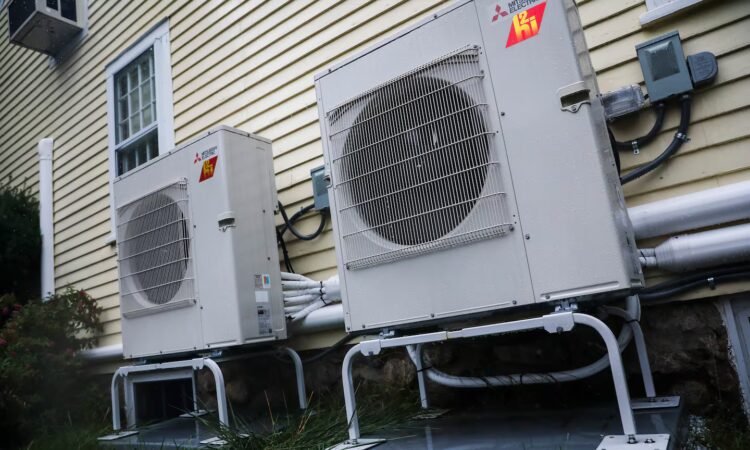
If you are concerned about rising energy costs, you’re not alone. In New England, families are certainly paying more for energy. It’s taking a toll: Three out of four Americans say they worry about their utility bills, and two out of three call rising energy costs a source of stress.
For too many of our neighbors — seniors on fixed incomes, families in older homes, historically marginalized communities — high energy bills can mean truly discomforting choices: Heat or food, rent or lights.
We can’t afford to overlook the fastest, cheapest, most equitable solution we have to address high energy costs: energy efficiency. Efficiency programs have delivered enormous value for decades. With federal funding cuts threatening to make energy efficiency program budgets even tighter across our region, efficiency is one of the few tools we can control to keep progress moving. Now is the time to double down on this proven solution.
From 2012 to 2023, energy efficiency programs delivered $55.1 billion in lifetime benefits across New England, returning more than three dollars in value for every one dollar invested. Such programs have supported over 161,000 energy efficiency-related jobs across the Northeast. Nationally, the Building Performance Association reports that energy efficiency employs more than twice as many US workers as the entire fossil fuel industry.
This isn’t a solution that needs years of planning or permitting. Energy efficiency ramps up fast. It’s already built into our region, with programs in every state that can deliver savings faster than we could build new natural gas plants, transmission lines, or distribution infrastructure.
We find ourselves at a crossroads. Some programs are falling short of their goals. Others are facing budget cuts. There’s a growing chorus saying the “low-hanging fruit” has been picked and that efficiency has done all it can do.
That’s not true. In the nation’s capital, DC Sustainable Energy Utility saves nearly 38 kilowatt hours for every dollar invested, according to our analysis at VEIC. Vermont delivers 28.5 kilowatt hours on the dollar. In states like Rhode Island, the savings per dollar are less than a third of that, but that means there is still enormous potential left to capture.
Capturing that potential, both in New England and nationwide, is critical. It’s also achievable. Consider the rapid expansion of energy-intensive data centers. According to Rewiring America, data centers are driving new energy demand to the tune of an additional 93 gigawatts by 2029. Ratepayers carry the burden. Energy efficiency can help relieve that burden through measures like residential heat pumps. Remember: Reducing demand is like adding capacity to the grid. Working with data center “hyperscalers” to switch specific households to heat pump technology could meet as much as one third of this new energy demand.
Clearly, there are paths forward. Vermont has aligned its programs with climate goals and doubled business incentives. Massachusetts is reconfiguring its Mass Save program to better serve renters and low-income households. Maine has updated its plans to balance affordability with the state’s ambitious 100 percent clean energy target. According to the American Council for an Energy-Efficient Economy, the Northeast has some of the highest-ranking energy efficiency programs in the country. Across the region, states are collaborating, sharing lessons — even turning energy savings into a resource they can sell back into the electricity market.
This is the business case for energy efficiency. Of course, new energy generation is important — solar and wind are clean, renewable sources that continue to expand across New England and beyond. But to meet our goals, we need both new generation and optimized efficiency. After all, efficiency simply means using less energy in the first place, which reduces the need for — and costs of — new supply.
Energy efficiency promotes equity, too. Programs that weatherize homes, replace inefficient equipment, and improve indoor air quality don’t just save energy, they can improve health, build resilience, and ease energy burdens for all.
As we work toward a fully decarbonized future, energy efficiency is the bridge that makes it possible. It works together with electrification and renewable energy, unlocks demand flexibility through new technologies, and helps tackle emissions.
We have a choice to make: We can continue to scale up the resources that have been saving New Englanders money for decades, or we can sit back and watch rates rise.
We already know the right answer. Energy efficiency is the cornerstone of affordability and climate progress. If we scale it up with an eye toward equity, every household in every ZIP code will share in the benefits of a cleaner, more affordable, and more resilient energy future.
This is a turning point for New England and the nation. Together, we can deliver the next generation of energy savings and make sure no one is left behind. Now is the time to act.
Rebecca Foster is CEO of VEIC, a clean energy nonprofit that’s delivered high-impact energy solutions focused on innovation and affordability in New England and beyond since 1986.




